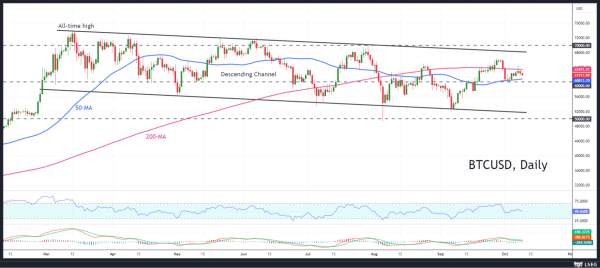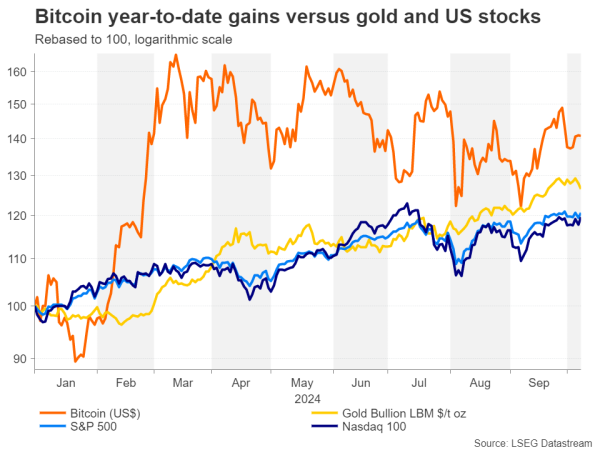Bitcoin in tepid rebound as geopolitical woes ease – Crypto News

- Inflows lift Bitcoin on Monday, but rebound falters
- Improved sentiment holds price action above 50-day MA
- But geopolitical and election risks keep bulls in check
A short-lived bounce?
Digital assets took a significant hit last week from the geopolitical turmoil, as Iran’s missile attack on Israel drove investors to safe-haven assets such as gold, leading to the first outflow in three weeks. However, this week got off to a solid start, particularly Bitcoin ETFs, which saw a net inflow of $235 million on Monday.
Bitcoin hit a one-week high of $64,452.69 in intra-day trading before pulling back, as the positive momentum faded quickly. Technically, there is strong resistance being provided by the 200-day moving average (MA), which is capping prices in the $23,450 region.

Middle East war fears hurt sentiment
But there is a more valid reason for the caution as investors are nervous about the possibility of an all-out war between Israel and Iran. When Iran fired 180 missiles on Israel last week, Bitcoin slid from above the $64,000 level to near the $60,000 mark while gold surged by more than 1%.
Aside from the threat of a broader conflict in the Middle East that could potentially drag the United States into direct military confrontation with Iran, uncertainty ahead of the US presidential election is also keeping the bulls at bay.
US election risks
Crypto traders favour a victory for Donald Trump who has become a champion of late of cryptocurrencies. But opinion polls suggest Kamala Harris, who is floating the idea of a capital gains tax on all assets including cryptos, is more likely to become America’s next president.
Despite the headwinds, however, there are still several upside forces in place that are putting a floor underneath any selloff. The $60,000 level is the immediate support area that is likely to hold as long as risk appetite stays strong.
Reasons to be cheerful
Rising optimism about China’s economy has lifted equity markets globally, with a positive knock-on effect on cryptos. Whilst there are still some doubts about Beijing’s commitment to large-scale stimulus, the picture is a lot brighter than it was a few weeks ago.
Additionally, the prospect of lower borrowing costs around the world, but primarily in the US now that the Fed has also joined the rate-cut bandwagon, is sustaining the bull market on Wall Street.

Other risks to watch
But the upbeat mood will be tested over the coming weeks as the Q3 earnings season gets underway. Disappointing earnings all round could weigh on cryptos too. Unless perhaps if any selloff is limited to specific sectors such as tech and AI, then there could be some rotation into cryptos.
In the more immediate term, the US CPI report for September, due on Thursday, could upset the bulls if the data is hotter than expected and a November rate cut by the Fed becomes less certain.
A neutral bias
Looking at the medium-term outlook for Bitcoin, the price continues to trade within the slightly bearish channel that started taking shape in March. But the short-term view has turned neutral amid the lack of clear direction and the price being bound by the 50- and 200-day MAs.